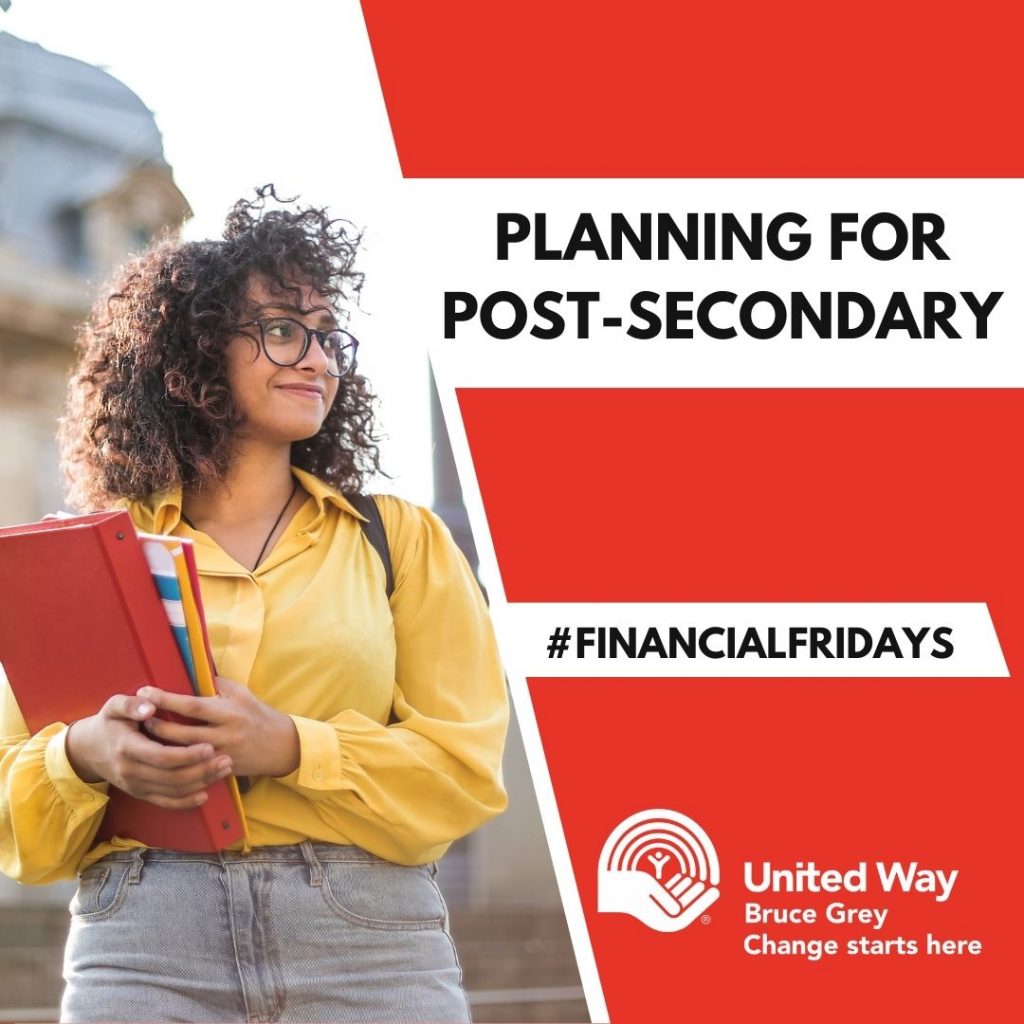#FinancialFridays: Planning for Post-Secondary

Are you or a youth in your life going to post-secondary school in the coming year? Whether you are planning to go to trade school, college, or university, there are ways to help pay for your post-secondary schooling. Planning and applying ahead of time is vital.
Make a Budget
Estimating a budget ahead of time can help you prepare. You may not know all the expenses you will have to pay, but having a general idea can help you prepare. The government of Canada has a website that can help you think through your budget as a student.
https://www.canada.ca/en/financial-consumer-agency/services/pay-down-student-debt.html
You can also check out My Money Coach Canada for a free budget template designed for Canadian students.
https://www.mymoneycoach.ca/budgeting/budgeting-calculators-tools/student-budget-worksheet
Community Foundation Grey Bruce Education Grants
The Community Foundation has over 30 education grants for students in Grey and Bruce Counties to apply for. Applications for those going to post-secondary school in 2024 are open now and due by May 31st.
Registered Education Savings Plan (RESP)
Check to see if an adult in your life opened a Registered Education Savings Plan in your name. RESPs can stay open up to when you turn 35. There are two government programs that help increase what is put into an RESP: the Canada Learning Bond and the Canada Education Savings Grant. If they did, knowing the amount available in that RESP account can help you plan how much you will use each year towards your post-secondary costs. There are guidelines related to RESP funds so learn these to help you plan.
Ontario Student Assistance Program (OSAP)
The Ontario Student Assistance Program is a government program that helps students pay for post-secondary school and education. Your OSAP application helps you apply for grants and loans. Grants are money you don’t have to pay back. A student loan is money you repay once you’re done school. OSAP can help you pay for:
- Tuition
- Books and equipment
- Fees charged by your school
- Living expenses (full-time students only)
- Child care (for full-time and part-time students with children.
Student Loans and Lines of Credit through banks
Many banks and credit unions in Canada have loans and lines of credit for students. Each bank or credit union will have its own guidelines, eligibility, interest rates, and rules for student loans and lines of credit they provide. Visit the banks website to see more details. These loans will most likely have higher interest rates than OSAP and should be considered only after other options. Do know that each bank and credit union has the “right to offset”; this gives a bank or credit union that you have an account or investment with to take money from the account or investment at any time to pay down a loan. It may be helpful to apply for a student loan or line of credit at a bank or credit union you don’t have a bank account with. This protects the money in your bank account from the “right to offset” rule.
Working while going to post-secondary school
Some people rely on work or choose to work while they are going to school. This can help you pay for things you need or want while also helping you learn how to manage your time. It is important to balance working with attending classes, studying, and socializing.

